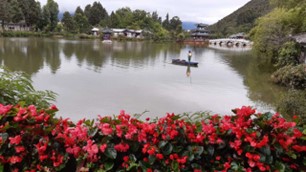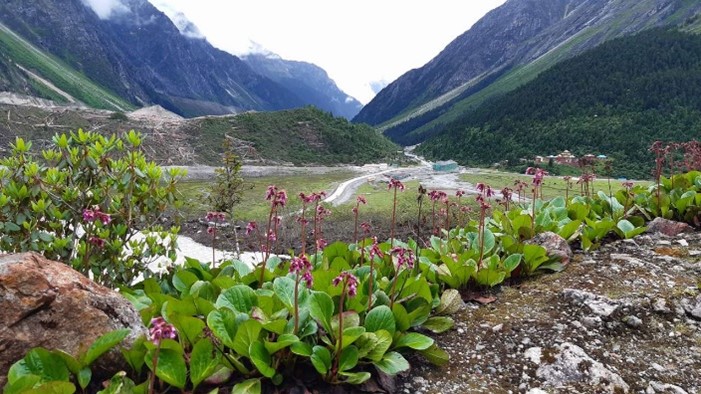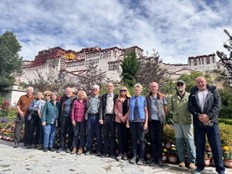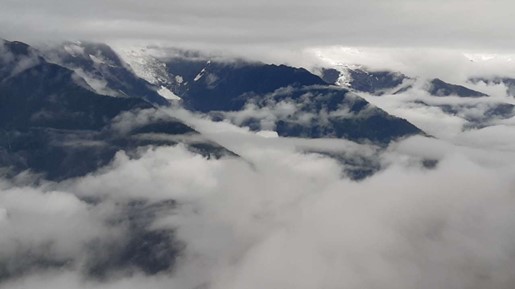by Rosemary Ulph
Who would have thought that attending the Alpine Garden Society’s Collectors’ Garden Conference in September 2023 would lead me to Tibet!
The conference featured John Mitchell, Alpine Supervisor at the Royal Botanic Gardens Edinburgh who instantly impressed me with his presentation on the botanical tours he leads in the Himalayan region of Tibet – I signed up as soon as I could!!
In June/July a small band (13) of us spent 3 weeks travelling through Yunnan Province in China into Tibet, gradually rising in altitude to 5200 metres above sea level. We were self-described plant nerds: several were experts in their field and were well-used to these plant-hunting expeditions, “botanising” in the wild.
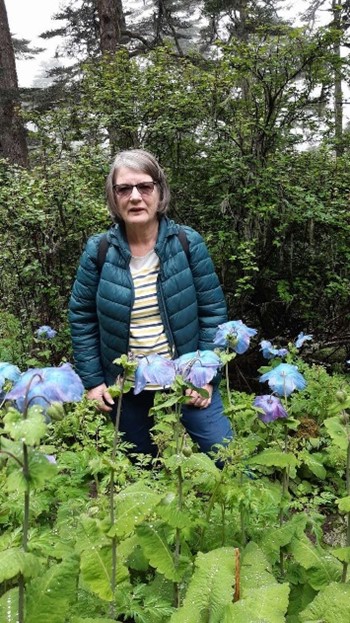
Before departing, a friend mentioned I would see Meconopsis (the Himalayan Blue Poppy), which I thought would be too good to be true. Our first sighting was on day 2 in a damp woodland – a huge patch of M. betonicifolia= – I was in 7th heaven!!! Amazingly, Meconopsis became so common, even on rocky hillsides, that they no longer caught our eye.
The diversity of plants in these alpine areas was astounding. The tour took us through several different habitats from the low-lying, boggy woodlands beside rivers and lakes, to shrubby hillsides covered in dwarf Rhododendrons and up to the scree slopes and snow line where tiny plants hung on for dear life. On the Zhongdian plateau in an area little more than a large paddock, we found the only patch of Thermopsis barbata (Black Pea) in the world! Pictured below. This area was incredibly dense with so many interesting alpine species – Irises, Stelleras, Euphorbias to name a few.

There were many forms of Primula throughout the tour. Whilst typically they grow beside streams, many species were growing up on rocky hillsides where they take advantage of the moist atmosphere. Pictured below are P. deflexa, P. sikkimensis, P. russeola and P. tsariensis.
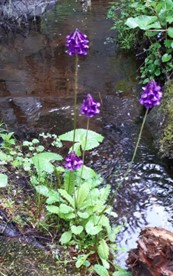

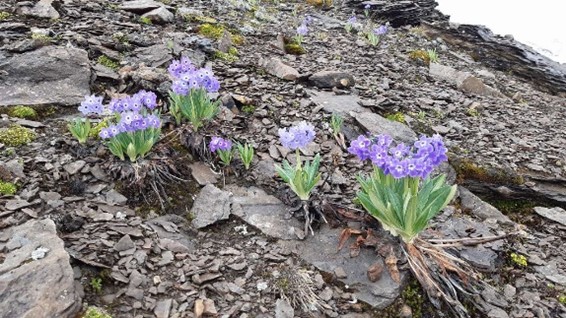
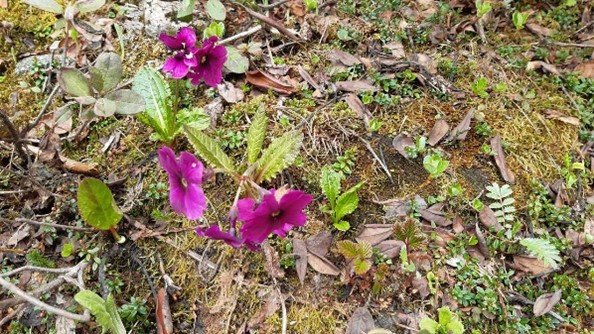
With the help of our Chinese and Tibetan guides, we ventured further into Tibet travelling by bus, and where the roads were narrow and rough, in 4×4 cars. The mountainous terrain often only allowed single lane traffic with steep cliff faces on both sides. But the journey was worth it: we would stop along the way to examine and photograph plants which many of us had never heard of or seen before.
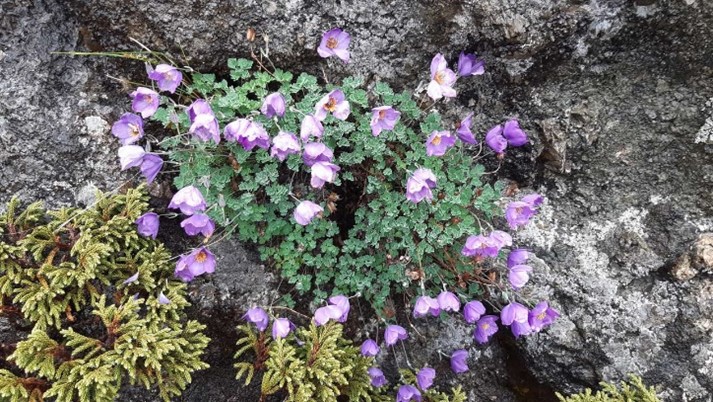
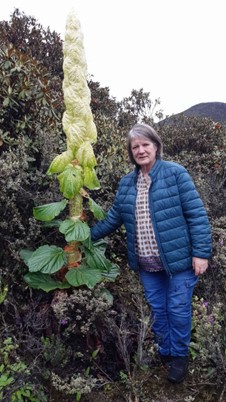
We took treks up into the mountains to locate rare plants such as the Paraquilegia microphylla (below) and Rheum nobile (right). Rheums are highly prized as a tibetan medicine so have been heavily poached in the easily-accessed areas. We had to climb rocky hillsides to reach them.
Other exciting finds, pictured below, were the tiny Lilium nanum, Cypripedium tibeticum (Tibetan Slipper Orchid), yellow Meconopsis sulphurea and Persicaria griffithii.
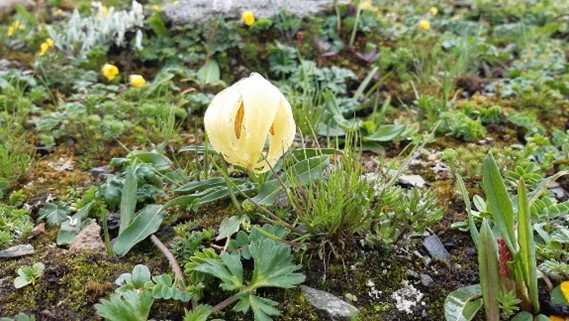

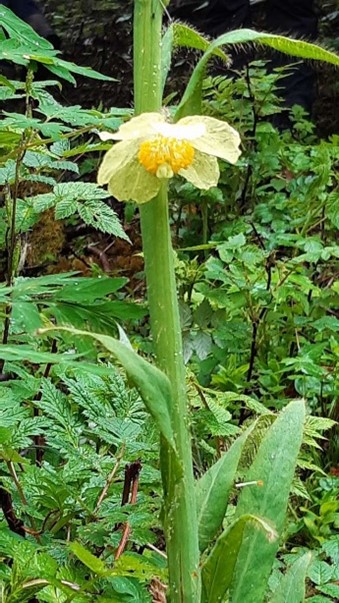
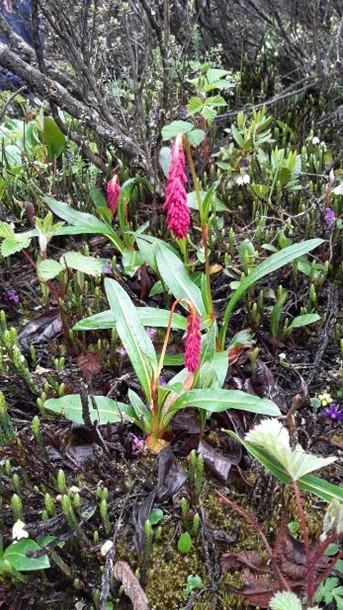
Some more common plants sighted in several areas were Arisaemas (including a yellow species), Corydalis, Spanish Moss in the forests and Bergenias up near the snow line in the glacial valleys.
Of course, not all places of interest were horticultural: we visited monasteries, Tiger Leaping Gorge which has a depth of 3790 metres, old Lijiang city with its markets and tibetan communal dancing and marvelled at the huge Potala Palace in Lhasa, sampling delicious chinese food all the way.
Altogether it was the trip of a lifetime and one which I can recommend to anyone keen about plants and seeing himalayan Tibet.
If you are interested in these tours do contact the Alpine Garden Society of Victoria to become a member. The tours are conducted through the UK branch of the organisation. Follow this link Alpine Garden Society UK to find out more.
I’ll finish off with a few more images to boost your interest!


